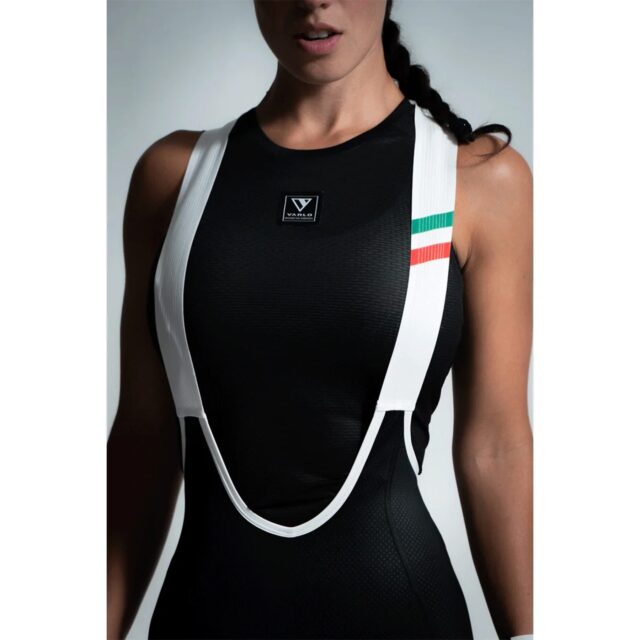
Intro
Most of our reviews are pretty long — and take a long time to produce — because we want to provide enough info for you to actually determine whether the gear we tested will work well for you.
But we get asked to check out an increasingly wide range of products, and sometimes, we just want to tell you about something we’ve been using and loving lately.
So that’s where this monthly series — Stuff We Like — comes in, where we keep you current on a broad range of stuff we’re currently digging.
And if there’s something you love that you think we ought to check out, drop us a note in the comment section below.
Skratch Labs Hydration & Recovery Sport Mixes
MSRP: $21.95 – $33.95 USD
Zack Hendersen: I have many, many stories about bonking during my youth, when I’d attempt athletic feats on little to no food — just hopes and dreams. The fact that I often couldn’t stomach things like gels, excessively sweet drinks, or other conventional sports nutrition didn’t help. Enter my savior, Skratch Labs. I’ve been a loyal customer for years, but while I’ll stray from their excellent line of food items on occasion, their Hydration Sport Mix and Recovery Sport Mix are both peerless for my tastes.

The Hydration Sport Mix in particular seems to blend very well without getting syrupy or particularly sweet, meaning I’m not diluting those precious calories in pursuit of a palatable beverage. The Recovery Sport Mix requires a blender bottle for best results, but it seems to restock my depleted muscles without being a protein gut bomb, and the horchata flavor is good enough that I struggle not to reach for it even without having exercised. It’s not the cheapest stuff around, but it (1) effectively keeps me going and helps me recover, (2) tastes great, and (3) seems to work particularly well for folks with stomachs that can throw a fit with other sports nutrition options.
Bag Balm Sugar Scrub Cleanser
MSRP: $14.99
Kristin Sinnott: As a kid, there was always a green Bag Balm tin in the bathroom of our our New England farmhouse. I didn’t use it much back then, but Bag Balm has recently become a staple in my house again. But it’s not the green tin my son is likely to remember as much as the green tube (much easier for quick applications when you don’t want to get your hands messy) or my personal favorite, the Sugar Scrub Cleanser. The cleanser is my go-to. It smells amazing — I’ve been tempted to actually taste it multiple times. I love that it creates suds the more you scrub and I appreciate how it moisturizes my skin. If you’re looking for a new cleanser, I recommend giving the Sugar Scrub a try.
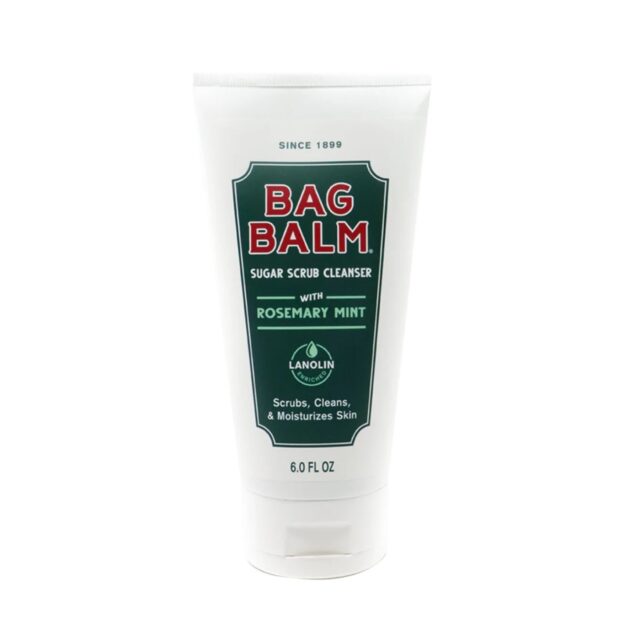
Smith Mono Lake
MSRP: $195
Jed Doane: Smith’s Archive Collection series brings back vintage sunglasses designs with new technology. The Mono Lake (original version circa 1991, and named for the eerie lake near the couloir-laden eastern Sierra) is a new release. After several weeks of heavy use, I’ve found it to be a versatile, high-performing option disguised as a casual piece.
For daily use, the Mono lake is very comfortable, higher-coverage, and the lens technology is solid. I tested the Polarized Brown option featuring Smith’s Chromapop technology, which blocks certain wavelengths to help eyes distinguish color. I found the lens to be a good daily option, and performed quite well in lower light, which was helpful on days with scattered clouds or when moving through scattered shade on a sunny day.
Surprisingly, despite the larger frame, I found the Mono Lake to be a serviceable option for hiking and even road running. The frame is quite lightweight, and non-stick rubber nosepads kept things in place during movement. They wouldn’t be my first choice for trail running sunglasses, but in a pinch, they did a great job, and if I was taking one pair of sunglasses on an extended trip, I’d be very comfortable with the Mono Lake as a daily driver.
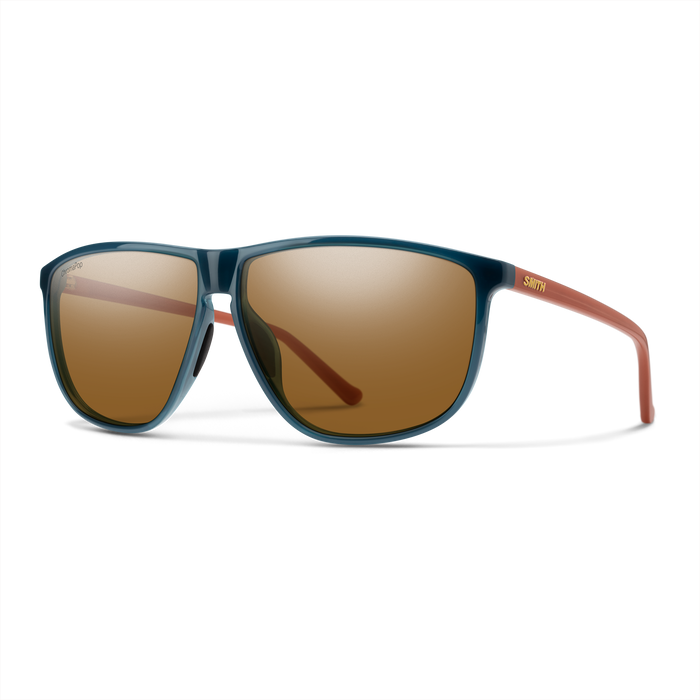
Stio Shifter Shirt
MSRP: $99
Kristin: I absolutely love the Stio Shifter Shirt. Every time I think about the Shifter Shirt, which is surprisingly often, I find myself hopping online to see if Stio has released any more colorways. From what I can tell, Stio sells out of colors pretty quickly, so I try to check in often so I can order another shirt right when they restock. I have the shirt in a fun floral pattern and one of my friends calls it my party shirt. It is definitely a fun print, but it’s not over the top and I like wearing it all the time — festivities are not required.
I have probably worn the shirt out casually as much as I’ve worn it on my bike. The fabric is soft, it hangs well. It has a shorter cut (the size medium extends a little past my hip bones), and it has an athletic fit — which works well for my build. For comparison, I have Stio’s Eddy shirt in both size small and medium and while I like the way both fit, I do think the size small is much more flattering on me. I think this could be the case for the Shifter as well, but I haven’t tried on the size small.



The loose fit allows air to flow through as does the perforated underarms, and it dries quite quickly. On a recent ride, my friends and I got caught in a surprise storm that left us drenched before we could even throw on our rain jackets. Unfortunately, that also meant the red dirt turned to mud and my shirt is now speckled with it. It’s not too noticeable thanks to the floral print, but if you have a trick to getting red mud stains out of your clothes — please post it in the comments.
If you’re looking for a new casual shirt and / or a new bike shirt — the Shifter Shirt fills both roles beautifully.

Sea to Summit Ether Light XT Insulated Sleeping Mat
MSRP $189-239
Jed Doane: Sea to Summit’s Ether Light XT is their top-tier three-season ultralight backpacking pad, and I really like the design. At 470g, it’s significantly heavier than some other ultralight competitors, but at 4 inches thick and with a 3.2 R-value, I found that weight penalty to be a tradeoff I’m happy to make.
Inflating the pad is as easy as any that I’ve ever used. Sea to Summit’s Airstream pump technology is an extension of the stuff sack and uses some smart fluid dynamics engineering to allow for easy inflation of the pad with 3-4 breaths. I found this to be a revelation for multi-night backpacking trips — I use a Long version of most sleeping pads and inflating them with my lungs alone has always taken forever and been very uncomfortable. Additionally, the decreased condensation should prolong the pad’s life.
Luke Koppa and I have really enjoyed our Sea to Summit Aeros pillows, and the Ether’s Pillow Lock system, which uses multiple small velcro points to secure the pillow to the mat, has really helped my sleep in the backcountry.
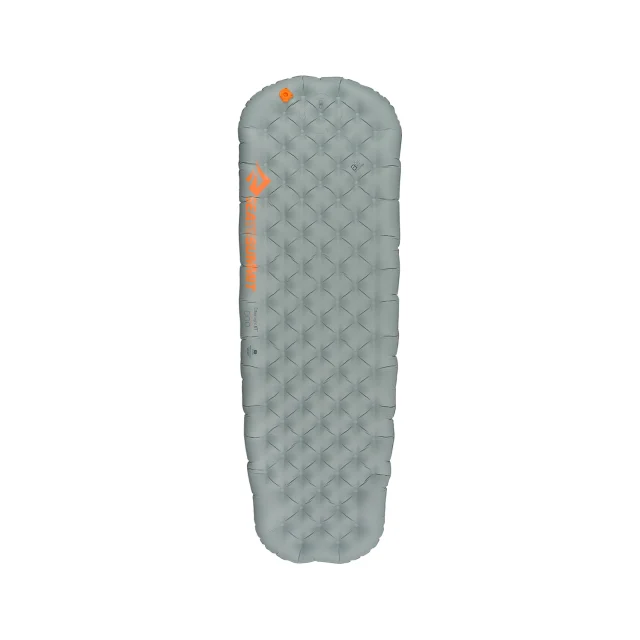
I used the Ether Light XT Insulated mat with a (perhaps ill-chosen) 45-degree quilt on several colder nights, and was quite comfortable. The mummy shape has a subtle “lip” that kept me on the pad when slightly off-kilter, and the 30D face fabric, laminated with TPU, is markedly quieter than other pads I’ve used. The sleep quality is also better than with other baffle-based sleeping pads. Sea to Summit uses waffle-like cells rather than baffles, which I found to conform to my body and various sleeping positions quite well.
Overall, those looking for one sleeping pad comfortable enough for front country adventures, light enough for longer backpack trips, and warm enough for fall and spring adventures should check out the Sea to Summit Ether Light XT Insulated Mat.
OneUp EDC Tool + Threadless Carrier
MSRP: $135.97
David Golay: I’ve been a slow adopter of on-bike storage, but have finally seen the light, and the OneUp EDC with the Threadless Carrier is one of my favorite options for keeping a tool on the bike.
The biggest reason that I haven’t gotten on board with on-bike tool storage sooner is simply that, as a reviewer who’s swapping between bikes all the time, moving tools from bike to bike and keeping track of where I have tools stashed and when I need to carry one in a pack quickly becomes unwieldy. And while the EDC isn’t ideal for that (specific, kinda niche) scenario since it requires removing the star nut from the fork for installation, I’ve been using one on my personal bike for a while now and like it a lot.
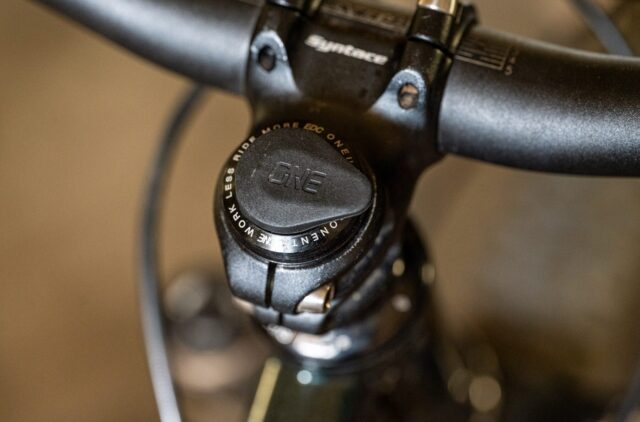
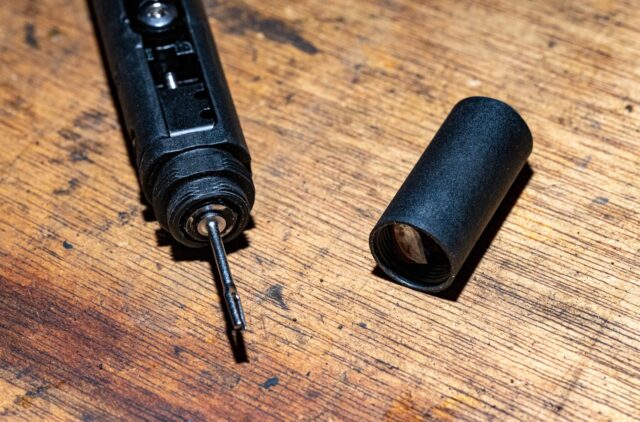
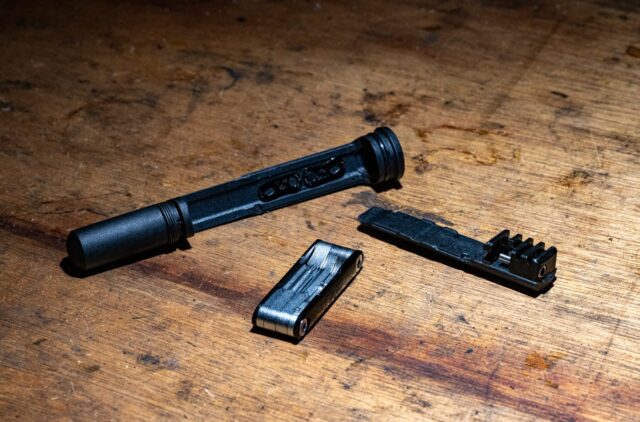
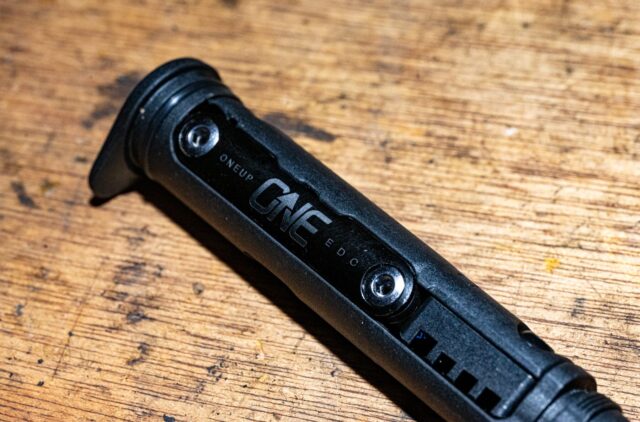
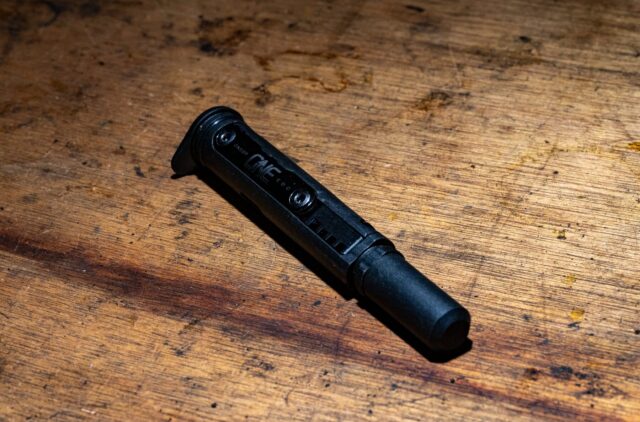
[The Crank Brothers S.O.S. lineup that I shouted out a few months back is also quite good, and much easier to swap from bike to bike if that’s a consideration. I’m still happily using a few of the S.O.S. tools on various review bikes.]
The EDC, though, has a couple of advantages if you’re not as worried about being able to move it from bike to bike. For one thing, with the Threadless Carrier setup that I’m using, the tool and plug kit are stored neatly in the steerer tube, so you don’t need to have a free set of water bottle / accessory mounts to use it. But the biggest advantage of the EDC tool over the S.O.S. one is that, because the EDC only uses two pivot points for the fold-out tools rather than four, it’s a lot easier to wield in tight spots when clearance is limited, and is quicker to swap between tools since they don’t fold over on top of each other as much.
The biggest drawback of the EDC + Threadless Carrier combo is that you need to snap the EDC tool into the tire lever / holder assembly when you’re done with it, and that step can be a little fiddly. But it’s not too bad once you get the hang of it, and the EDC scores very highly for packing a quite functional tool with a lot of features into impressively little space. It’s got most of the main tools to do basic bike maintenance stuff — 2, 2.5, 3, 4, 5, 6, and 8 mm Allen wrenches, a T25 Torx, flat head screwdriver, a tire lever, a chain tool, four sizes of spoke wrench, a Presta valve core tool, storage for a spare chain link and rotor bolt, and a tire plug kit. Add a pump or CO2 inflator somewhere else on the bike and you’re in good shape.
Luke Koppa: I’ll just add that I’m also a fan of OneUp’s EDC system; I’ve been running it in their pump and agree with everything David said above. The pump-storage approach is a bit easier to swap between bike setups, especially since it also stashes nicely in / on a hip pack, though I may switch to one of the steerer-tube options on my bike in the future to free up space in my SWAT box. That said, the Jank Components SWAT Pump Holder does hold it nicely inside the frame of my Specialized Stumpjumper Evo.
Skida Running Cap
MSRP: $48
Luke Koppa: I have a big head that doesn’t pair well with most hats, and the ones that do fit well are rarely great when it comes to dealing with heat and/or perspiration. But since I’ve got a lot of hair, I still need something to keep it — and the sun — out of my eyes throughout the summer. I like 5-panel layouts since they’re lower-profile and lack a knob up top that can create pressure points when putting them under a helmet, but very few 5-panel hats offer enough volume to fit my big dome.
I was skeptical when I first tried on Skida’s 5-panel Running Cap (it looked small), but after a month or two with it, it’s become one of my favorite warm-weather hats. Between its adjustable back band and stretchy overall construction, I can achieve a comfortable, secure fit without the hat deforming a whole bunch, and its synthetic mesh and open-knit fabrics do a good job of wicking and drying when I’m working up a sweat. The brim is also very flexible, which means I can stuff the hat into any crevice in a pack without worrying about it permanently deforming, and I can even wring it out if I fully saturate the material.
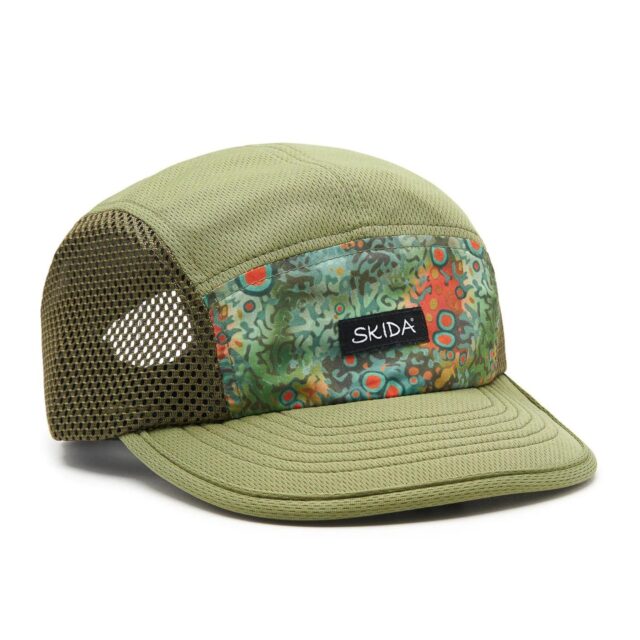
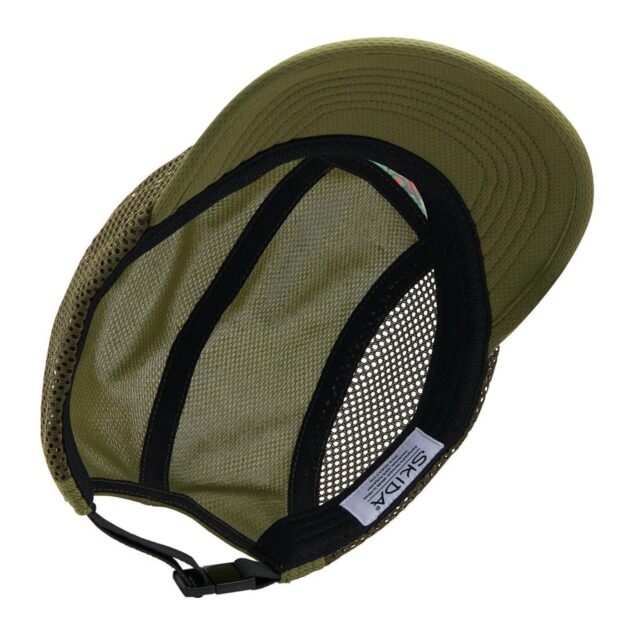
Some of our other reviewers (with more average-sized heads) have also been enjoying this hat for similar reasons, but for fellow big-headed people like me, I’d recommend checking it out if you’re searching for a breathable option for hot days outside. It also doesn’t hurt that the Battenkill print I have features elements of one of my favorite fish, the brook trout.
Kristin: I don’t have as big of a head as Luke, but I too struggle with finding hats that fit me well. Skida’s brim hat is one hat that I’ve never really gotten along with. It’s just a bit too short for my preference regardless of how many times I tried it on. I really wanted to like it because I am a fan of the fun patterns they offer. I was a little nervous to try on the new Running Cap as I assumed it would have a similar fit. Thankfully, it does not. The fit is deep enough for my head and I like how it looks and fits. I have other running hats that are a bit lighter weight and more breathable in the front, but the Skida Running hat is the only one that is flexible and that has a nice wide synthetic mesh on the sides. It’s my go-to running and traveling hat.

Royal Robbins Desert Pucker Dry Short Sleeve Shirt
MSRP: $75
Noah Eckhouse: I sweat a lot, particularly in higher humidity, and love hot weather button down shirts for comfort on casual evenings and at summer events. Until I changed my wardrobe to shirts of tech fabric or seersucker cotton, I often found myself in the soggy-cotton-shirt death spiral — which happens when you begin to sweat, and an absorbent shirt just goes downhill fast. You feel like a bathmat after a while.
The Royal Robbins Desert Pucker Dry shirt came out of the box feeling like a heavy shirt. Admittedly it looked great in Collins Blue, fit well in XL and the fabric had a nice drape to it. But the material felt heavy and warm. I was worried about how it would do with the current “dryer-vent climate” in Boston. Nonetheless, as your intrepid product reviewer, I put it on and headed to a steamy outdoor BBQ.
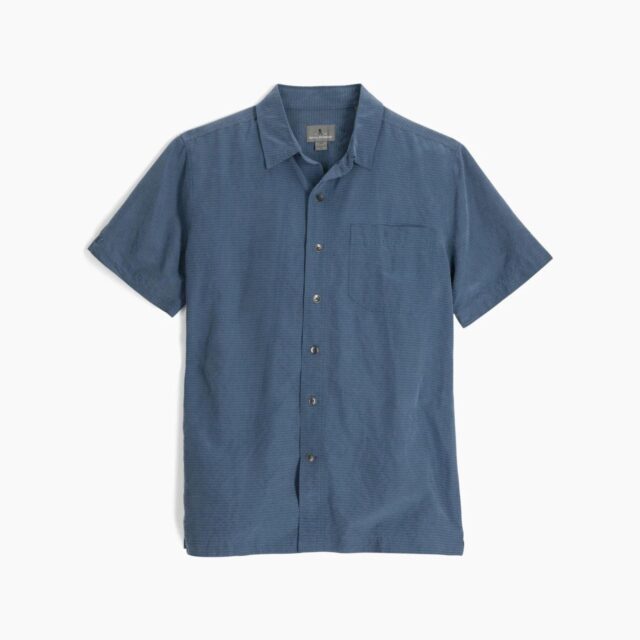
I was really surprised – the shirt never got hot. It never showed an appetite for moisture and never stopped looking off-the-hangar fresh. I got home and read more about the shirt and its pedigree: over a million sold, been around for 25 years, made with wood derived Carbon-Zero TENCEL™ Modal fibers, and it’s certified as CarbonNeutral™ . It’s also made with HeiQ Tempratech technology, at which point I paused to wonder if this was a shirt or a laptop. In any case, this technology is activated by rising body temperature and claims to offer up to 4.5 degrees F additional cooling. Sounds pretty fancy. Summary: It totally worked for me.
So mark me down as a Desert Pucker Dry shirt fan one million and one. I’ve worn it a dozen times and always felt comfortable, whether downtown on a heat island or in a cool airplane cabin. It’s a great shirt, classically styled and in a rainbow of colors. It washes well and dries quickly. It’ll be in my tropical and travel shirt rotation for years to come.
Arc’teryx Cormac Arc’Word Shirt LS
MSRP: $80
Luke: This is just a solid all-round summer baselayer. The Cormac Long-Sleeve uses a pretty light 100% polyester (80% recycled) knit that Arc’teryx calls “Phasic LT with DAO” — in practice, it breathes and wicks moisture very effectively, and it resists odor buildup notably better than most fully synthetic layers I’ve used.
The Cormac still gets stinky quicker than most wool-dominant fabrics I’ve tried, but I can usually get 2-3 rides or hikes in before I really feel the need / societal responsibility to toss the Cormac in the wash, which is well above average for similar synthetic fabrics in my experience.

The Cormac also offers a 40+ UPF rating for long days on the sun, and I appreciate its middle-of-the road fit; its long sleeves and moderately long hem length offer lots of coverage, but it doesn’t feel restrictive apart from the forearms, which are fairly snug when pulling up the sleeves to my elbows (that snug fit does keep them from easily dropping back down to my wrists). I’m a big fan of the shoulder patterning, which features an additional panel over the shoulder with front and back shoulder seams, instead of a traditional single seam (which can reduce mobility and/or not pair well with backpack straps) or raglan design (which adds range of motion but, IMO, isn’t very flattering unless you’ve got the shoulders of a bodybuilder).
I’ve used the Cormac for lots of bike rides, fishing outings, and summer hikes this year, and I plan on continuing to do so for years to come. If you’re interested and don’t love having a brand’s name emblazoned in big letters across your arm, there are also more understated variations of the Cormac, but with the same fit and fabric.
Sawyer Permethrin Fabric Treatment
MSRP: $20 for 6-application trigger-spray pack
Luke: In the past few years, I’ve come to appreciate apparel treated with commercial-grade Insect Shield treatments. They’ve done a great job of keeping me from being munched on by Colorado’s numerous mosquitos, all without dousing myself with DEET, and their effectiveness can last quite a while (multiple years for pieces I wear 20-50 days a year, in my experience).
However, I don’t own that many Insect Shield pieces, and the ones I do have will eventually lose their maximum insect repellance. So, rather than spraying myself and my clothes (which could potentially be damaged) by traditional bug spray, I’ve opted to treat my go-to summer apparel with Sawyer’s permethrin alternative, which is basically the “over-the-counter” version of Insect Shield. It doesn’t last nearly as long (Sawyer claims 6 weeks or 6 washes), but it’s worth it for me. This way, I can spray down my go-to summer clothes once, let them dry for a couple hours, and then reach for them whenever I know I’ll be around a lot of bugs.
(Many different brands sell at-home permethrin treatments, including Insect Shield; their aerosal version is actually on sale as of publishing this. Sawyer’s just happened to be in stock when I went to buy some.)
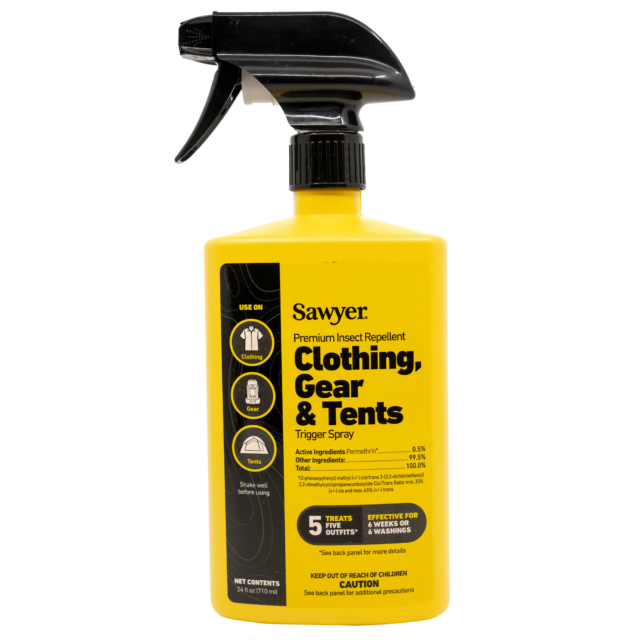
I’ve been spending a lot of stationary time in windless trees around Crested Butte, which means I’ll be surrounded by swarms of mosquitos about as soon as I stop moving. However, clothes that I’ve treated with permethrin do an excellent job of dissuading those bugs from digging into my skin. Most recently, I’ve spent hours shooting photos or arrows surrounded by mosquitos and bugs, and the only bites I found were on the tiny exposed areas of skin outside my permethrin-treated hoody and pants.
I suspect I’d do a combo of permethrin-treated clothes + DEET-treated skin for the worst bug scenarios, but high-alpine Colorado forests have subjected me to some of the highest-density mosquito swarms of my life (which has included many summers in the humid Wisconsin Northwoods), and this clothing treatment has done just as well, if not better than my typical (high-DEET) bug spray.
Sawyer’s “treatment pack” gets you six bottles, with each being claimed to treat a full apparel kit. Despite multiple bottles rupturing while in the back of my hot car on a recent road trip (I now have a very insect-repellant towel…), I still managed to thoroughly treat 6 top and bottom layer combos with the kit. While this is totally subjective, I much prefer throwing on some scentless apparel to keep the bugs at bay, rather than blasting myself with DEET. I’ll still do the latter when the bugs are truly awful, but I’ve found that treating my clothes with permethrin is a nicer alternative for most cases.
Abbey Bike Tools Crombie
MSRP: $42
David: I’ve been impressed with everything I’ve tried from Abbey so far, but the Crombie — the tool that started it all for them — has quickly become a particular favorite of mine.
[Check out Ep.164 of Bikes & Big Ideas with Abbey founder Jason Quade for more on their company history, and the story behind the Crombie.]
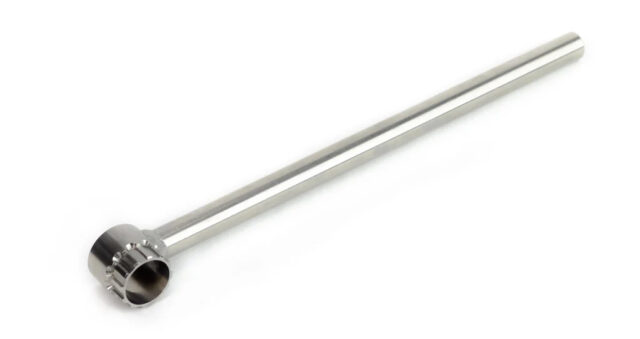
The concept is a simple one — the Crombie is just a cassette lockring tool with a handle welded on it — but it’s way quicker and easier to use than grabbing a standalone cassette tool and a wrench (or a socket and ratchet) to use it. And like everything else I’ve tried from Abbey, the Crombie feels especially well-made and lovely to hold, look at, and use. I’ve been using the standard SRAM / Shimano version, but a dual-sided variant is also available if you’ve got Campagnolo parts in your life, as is a dedicated Campy variant. A version with a pin to index into a 12mm through axle hub for an even more secure fit is available, too, but I (1) haven’t felt the need for that feature and (2) have found the fully hollow standard version to be useful for working on certain suspension forks (Manitou, mostly) that use a cassette lockring tool for some of the internals.
At the end of the day, the Crombie doesn’t really do anything that a normal cassette tool can’t, but it’s a lot nicer to use and I’m glad I finally sprung for one.
Varlo Women’s Mezza Essential Base Layer
MSRP: $49 (currently on sale for $30)
Kristin: I think I can safely say that the Mezza Essential Base Layer is the lightest top I’ve ever worn. It’s stretchy, soft, breathable, and quick drying. It’s so light, I can wad it up and it fits in the palm of my hand.
I’m not a big fan of exercising in just my sports bra, but I also hate being sweaty because my clothes aren’t breathable or too heavy. The Mezza is a nice option for warm days when I know I’m in for a hot workout. It’s also a great option to wear as a base layer, especially if the day starts cool and there’s a chance it will get hot. Having the Mezza on under my bib shorts, under a workout tee or long sleeve give me the option to shed layers. I packed it for a recent trip to New Hampshire because it’s so lightweight, I find I reach for it more often than not and it hardly takes up any room in my bag.
